Clever Engineering from Felt
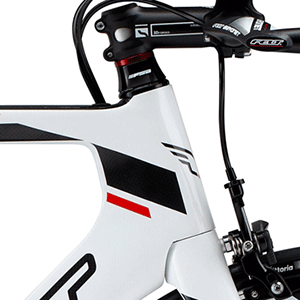
This is the time of year I like to write about the following season’s bikes. Most of the racing is over, the new bikes have been out, I’ve had some time to reflect on them, but next year’s racing is far enough in the future that you’re not pressed to make any buying decisions right away unless you want to.
Last week I wrote about Felt’s new B12 and I like that bike a lot. I’ll be writing more about Felt’s bikes over the next few weeks because once I get up a head of steam on a brand’s bikes I like to plow right through them, before I forget about what I learned.
The impression I may have left you with about the B12 and that new mold may not be entirely correct. So I thought I’d stop here and talk a little bit about that mold. What I wrote in the B12 article is this: “[Felt] came out with an entirely new mold for the B series, and this upcoming 2013 season is this mold’s debut.” Yes, what I wrote is true. But it’s not the entire story.
Felt spent a lot of time working on the DA it introduced two seasons prior to this new B series motif. Most companies downstream their upper end technologies. For example, Shimano’s electronic shifting started as a Dura Ace product, then went to Ultegra, and will probably end up as a 105 product as well. SRAM has introduced its yaw front derailleur as a Red product, but I would guess it’ll be a Force and then Rival technology in years to come.
What I wrote was, “Not to worry (thought I), Felt will downstream this DA mold in upcoming seasons… But Felt did not do that.”
May I revise and extend my comments?
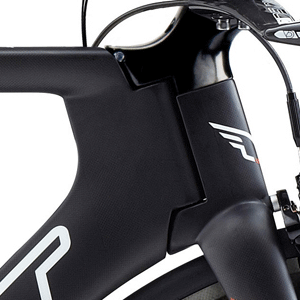
If you look at the B series, and DA series, bikes, you’ll note a lot of similarities. A lot. The tube sections, the joints, the profiles, are pretty close to identical. I might go so far as to say they are identical. Not only are the tube shapes the same, but the bikes are largely identical in their geometries. This is the tell. When bikes have identical (for example) wheelbases (and I mean to the millimeter), then this means one of two things: either the wheelbase is a driver when determining frame geometries, or the molds are essentially identical. I believe it’s the latter case.
“Wait! Wait!” you say. “What about the fact that the stack and reach of these series is so much different?” Yup. And it took me a good while to figure out what I think is going on. Felt did something sort of like what Cervelo did several years ago. If you’ll remember, Cervelo’s P2 geometry was more conservative than its P3. However, the bikes were really geometrically very similar.
Here’s what Cervelo did. Imagine taking a P3, adding a couple of centimeters of spacers, and then slapping the stem on and out the door you go. Quite a few tens of thousands of people did just that. Imagine just building the frame up to the point where those spacers topped out. Just extend the head tube up to that point (an extra 2cm or so), then raise the top tube to the point where it intersects with the top of the head tube and, presto, you’ve made a bike that is geometrically identical to the more aggressive model, however it isn’t geometrically identical in terms of how it fits. If you add head tube, you’re adding that head tube not vertically, but tilted back at 72 (or so) degrees. So, the top of the head tube—where stack and reach are measured—sits both further above the bottom bracket (the frame has more stack), and a bit further back toward the BB (the frame has slightly less reach).
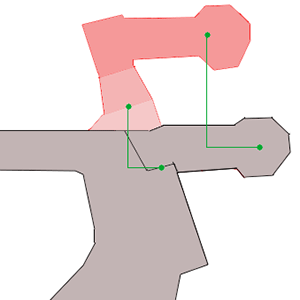
Felt did much the same sort of thing. Except, it took its superbike (the DA) and un-supered it. It brought the head tube up flush with the top of the top tube (the grey silhouette, adjacent, is the profile of the DA frame; the pink silhouette is the profile of the B series frame, with headset top cap and stem in deeper and deeper shades of pink). That by itself added stack. Then it took what was a proprietary stem that needed no headset top cap and replaced that motif with one that required a headset top cap. That did not add stack, but it added height. For example, look at the picture included here of the front end of a B2. That’s a 20mm spacer between the frame and the stem. That’s an extra 20mm of height (well, it’s 19mm of height: the sine of 72° (.95) x 20mm = 19mm.
These Felt B series bikes do not require that the headset top cap be all of 20mm in height. They also come with a 9mm tall headset top cap, and you can use whichever one you want. But you must use one of them.
What does all this mean, in terms of fit? In my size, 58cm, the DA has a stack of 536mm, and the B series has a stack of 576mm. That’s a whopping 4cm of height difference. But that’s not all. The bar bore (center of the pursuit bar) on the DA can sit as low as 30mm above the stack/reach point on the head tube top. The B series, with the lower (9mm) headset top cap, and a –17° stem (stem extension parallel to the horizon) sits exactly 30mm above the head tube top. So, if you want the difference in the height of the bike to be only that same 30mm of “Y” axis above the bottom bracket that you get from the lower of Felt’s available one-piece DA stems, you must use both that lower 9mm headset top cap and the –17° stem.
Likewise, the DA is a “longer” bike than the B series, but, only in terms of fit. Again, in my size, the 58cm DA has a reach of 447mm. Long. Yes. Nice. I likee. The B Series frame has a reach of 435mm in that same size. But that’s not because the front of the bike is pulled 12mm back, creating a front/center that’s also 12mm shorter. No, the bike “below the waist” is exactly the same as a DA. What’s happened is that the head tube is taller, and that, by itself, draws the head tube top back toward the BB in the “X” axis.
In other words, the B12 is the same geometry as the DA, it’s just that the B12 has its head tube extended up. Why do this? Because you’re spending good money on a bike, and you ought to be getting bike for your money, not headset spacers. The new B series is a clever way to get you a bike that fits you nicely without all those spacers, but also preserves the good geometry and the good aerodynamics of the DA.
However, what if you want a DA, but you need the bike to fit like the B series? Felt offers two kinds of one-piece stems for the DA, and one of these stems is in a lower motif, with both 70mm and 100mm of extension and 30mm of elevation. Then there is the taller motif, with both these extension lengths and a 60mm rise. The DA with the taller, 60mm-rise, stem gets you 30mm of that height difference back between the DA series and the B series.
The DA also comes with the option of a hinged stem, and then the geometric world is your oyster—you can stick the bars wherever you want.
Remember also that I'm writing about engineering, tube shapes, aerodynamics and fit. There are more differences between these various frames than tube shapes and where the head tube tops terminate. For example, the DA1 aboard which Kristen Armstrong won her Olympic gold medal may (we featured that bike here) is built with an ultra-high-end carbon schedule that differs from other frames Felt builds that match the DA1's exact or general shape.



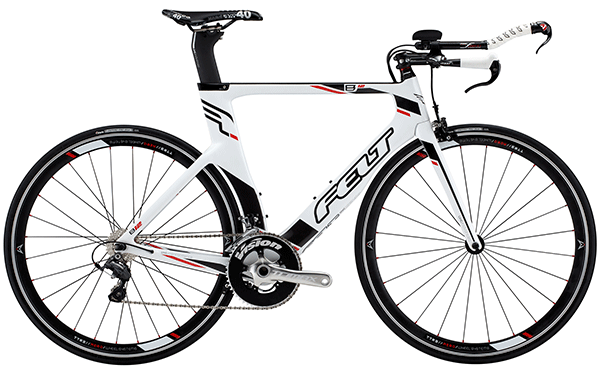
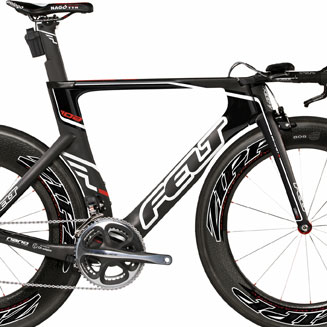

Start the discussion at forum.slowtwitch.com